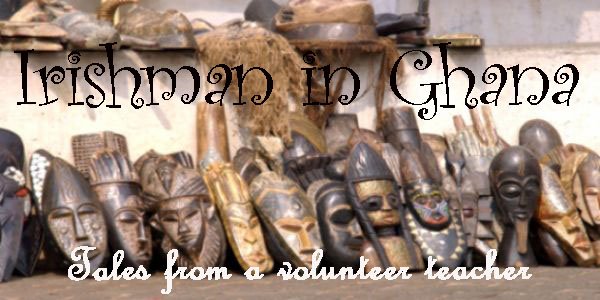
As the only professional teacher (which could mean good or brutal) amongst the volunteers at Edwenase I felt like I would be able to offer a lot from my previous roles in the classroom. 3 of the volunteers had just finished high school so the transition from student to teacher was a challenge to step up to. Dorota, on the other hand, had a lot of experience speaking to classes and conducting workshops for teachers in her previous job in Warsaw with the Polish Humanitarian Organisation's Education department. I had 4 ½ years experience tormenting students and catching them at their various misdeeds, many of which I had engaged in myself whilst in school. It helps when you are a teacher who has been in a lot of trouble at school, cause you tend to have developed an instinct or student misbehaviour.
After observing a local teacher conducting Literacy and Numeracy classes we put together our own timetable and set up new groups after assessing the students abilities and disabilities.
It may be a cliche at this stage, but the lessons I observed from the local teacher were a case study in bad teaching, that is from the perspective of the professional training I had received in Ireland and Poland.
Students were grouped inappropriately; teacher not knowing students names nor being aware of the extent of their learning limitations; little or no positive affirmation; students made to feel they were to stupid to grasp the subject through comments like: „How can you not know this, it's easy?”
One thing which was obvious though was the enthusiasm of the students to try and expand their knowledge in writing, speaking English, adding, subtracting and getting used to new currency terms, etc. So we allocated part of the project money we raised through selling plaintain leaf Christmas cards (made by students and volunteers) adorned with traditional adinkra or Christmas symbols to purchase a school kit for each student (copybook, sharpener, eraser, pen, pencil).
Alongside the primarily local educational resources we purchased for the school library we know had a good starting point to capture the students enthusiasm and translate it into something more systematically more educational.
Each student was placed in groups of 2-6 student as opposed to the previous system of 12-15 per group. Each student would receive at least one period of English and Maths per week, as well as remedial and informal lessons when time allowed. Now that they had their own copybooks and pen/pencil they were constantly coming to us with their work or asking for guidance. It had become a perfect learner-led situation, one which you will rarely witness amongst those who have plenty of access to copybooks, learning resources.
Thankfully, the novelty has not worn off and the students become even more enthusiastic each day. The more they learn in English grammar, in writing letters and their names better, in adding and subtracting using real money, the greater their appetite to learn even more.

2 comments:
great article!
Glad you liked it. At the moment we are wrapping up the programme as the students leave for home, orphanages or God knows where in July and August. Due to the fact that the Ghanaian gvt. have given no money to the school for the past couple of years it can not afford to stay open all year round.
In some regards it's a blessing that they are not just in the institution all year round.
Ultimately, these students need to be aided by their families and communities to integrate in society. But in reality, they are often very neglected during the break and are glad to get back to school.
Post a Comment